Spiky, Stinging, and Sometimes Deadly
Pasture weeds can reduce forage yields and have been estimated to cost Florida ranchers $180 million annually. Now that’s a scary number! What’s worse is that some of these weeds have the potential to physically harm livestock and even ranchers. On this Topic Tuesday we explore some truly spooky pasture weeds.
Showy Crotalaria
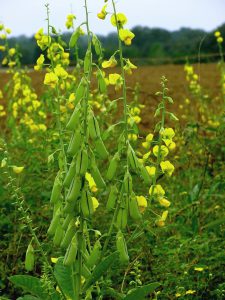
This weed is a non-native member of the legume family. Also termed “Rattlebox” because, once dried down, the beans inside its pods will rattle when shaken. Don’t let this beautiful, bright yellow-flowered plant fool you, it’s on this list because of its hidden toxins. As harmless as it might look, it is toxic to all types of animals including chickens, swine, and even dogs. The entire plant is known to have toxic properties, especially the seeds. It is a summer annual that blooms in late summer and seeds out in the fall. Crotalaria can be controlled with most common pasture herbicides including 2,4-D, dicamba, GrazonNext HL, or PastureGard.
Bull Nettle

Don’t let its white flowers deceive you, this is not a “flower” you want to pick. Bull nettle doesn’t sound so bad compared to the other names it goes by; tread-softly and finger-rot. This plant is entirely covered in irritant compounds called histamines and acetocholines that cause stinging and itching. If contacted, the pain from the stinging nettles usually wears off by 30 minutes. In severe cases a rash or discoloration can last for several days. While you might consider it a weed, bull nettle is a perennial native to Florida. It is highly tolerant to drought. Bull nettle isn’t the only stinging nettle we have in Florida, another common one is heart-leaf nettle (Urtica chamaedryoides) often referred to as fireweed, rightfully so.
Black Nightshade
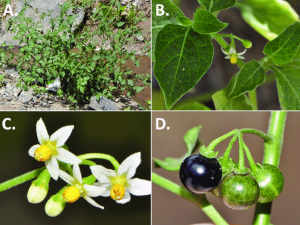
With a name like black nightshade it fits perfectly into the list of spooky pasture weeds. This annual is commonly found in cultivated fields, pastures, and other disturbed areas. It is an herbaceous plant that grows predominately upright reaching a maximum of 4 feet tall with small white flowers that cluster. Berries are also present; they are green when immature and turn black as they mature. The toxic alkaloid, solanine, is to blame for its toxic properties to livestock. The berries, especially the immature ones, are the most toxic part of the plant. The leaves are also toxic but to a lesser degree. Symptoms of toxicity include un-thriftiness, yellowed discoloration of the skin, and abdominal dropsy.
Oleander
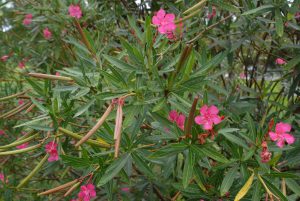
While it is very unlikely that you will encounter oleander in your pastures, this seemingly harmless landscape plant makes the list as the most toxic and deadly. Oleander has been responsible for not only livestock poisonings, but humans as well. It has narrow, pointed leaves and white, pink, red, or yellow clustered flowers. All parts of this plant are poisonous from the leaves to the roots. The toxic properties oleandrin and nerline cause symptoms such as vomiting, diarrhea, lethargy, tremors seizures, and can lead to death.
Blackberry Briars
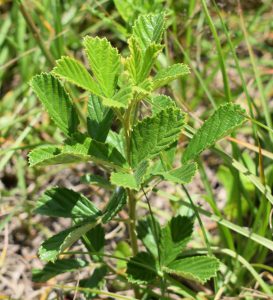
If you have ever walked through a blackberry patch with exposed legs, you know just how painful this weed can be. While it is not toxic, the thorns are tough enough to cause economically damage to livestock. Injury to bull’s reproductive organs, along with scratches and infections of udders have been caused by blackberry thorns. What is probably more frightening than the physical harm it causes, is how difficult it can be to control this weed once it is established. This perennial, thicket-forming shrub can spread by seed and rhizomes. Mowing can help reduce the size of the plants, making it more manageable for chemical control and minimize the spreading of seed during bloom, however, mowing alone does little to stop the regrowth of rhizomes. The most effective herbicides include metsulfuron, triclopyr, PastureGard HL, and Telar.
Black Cherry
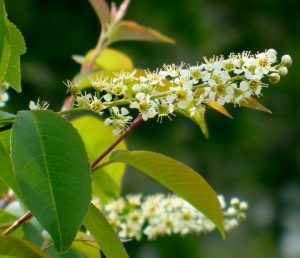
The black cherry tree is native to North America and can reach 60 to 90 feet tall. The deciduous leaves are dark green and shiny. The trunk has a dark, smooth bark with larger trunks being scaly. It blooms in late winter to early spring with small, white flowers arranged on terminal racemes. The tree also has green to black berrylike fruit. The leaves and twigs contain hydrocyanic acid which can be toxic to livestock, especially ruminants, when consumed in large quantities. Wilted or damaged leaves tend to be more toxic.
Creeping Indigo
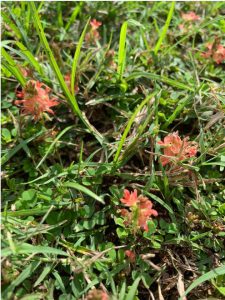
Don’t let this toxic weed creep into your pastures. Creeping indigo has a prostrate growth habit with a perennial taproot that can grow at least 2 ft deep. The leaves are alternate compound with 5 to 7 alternate leaflets. The stems grow very close to the soil surface and can reach up to 6 ft long. This plant tolerates high traffic areas and can often be spotted around barns, lanes, along fences, and overgrazed areas. Creeping indigo has been noted to cause toxicity in all types of livestock, not just horses, with severe cases resulting in irreversible neurological symptoms and death.
 1
1
